NORTH WALES COAST RAILWAY:NOTICE BOARD
Rheilffordd arfordir gogledd Cymru: Hysbysfwrdd
17 May 2021





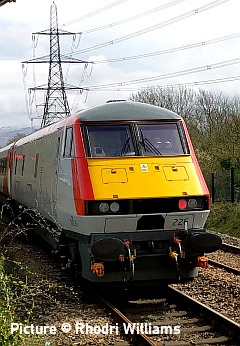
Forthcoming events
(see also our Calendar page for venues)
Note: we have removed all entries relating to meetings as the events are cancelled.

67 010 on a trial run passes Dwygyfylchi, 11 May. Picture by Gary Thomas.
Freight news
Suggestions of a daily 'jumbo' train of empty stone wagons to Penmaemawr were somewhat off-the mark: The diagram shows two conventional trains each way per weekday between Penmaemawr Quarry and Crewe Basford Hall sidings 'virtual quarry'. The first departs Penmaenmawr at 06:44 (6K61 and and 16:53 (6K17). Return empties depart from Crewe at 07:53 ( Mondays 08:53) (6D61) and 18:44 (6D17). The fact that the headcodes are shown on Real Time Trains suggests that GBRf are the operator, but no trains have run on the planned first day, 17 May.
A week's train chasing - with Stephen Dennett
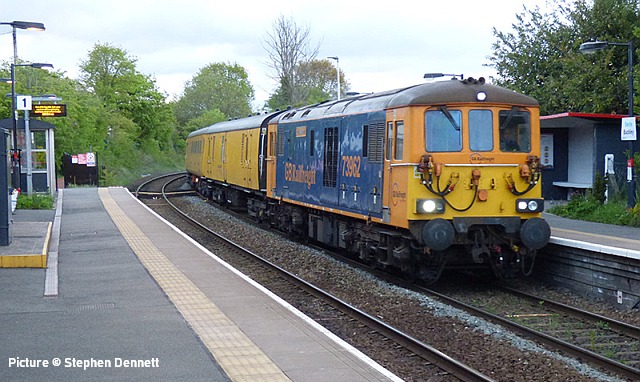
Firstly, it was nice to see two 73/9s, 73 962 Dick Mabbutt (named for Brush Traction's former group engineer who died in 2013) ...
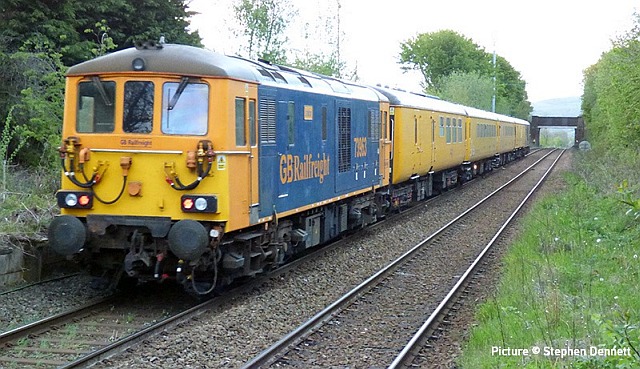
... and 73 963 Janice on the Network Rail PLPR (Plain Line Pattern Recognition) test train at Buckley Station on Monday evening 10 May.

12 May, and really lucky half-hour at Helsby, with two Class 66s on the Ellesmere Port branch within a few minutes of each other, plus four passenger services. I love Helsby, it always feels like you are stepping back in time with the working signal box, the semaphores, and the branch line. Above, 66 059 on the Encirc glass works to Warrington Arpley sand empties.
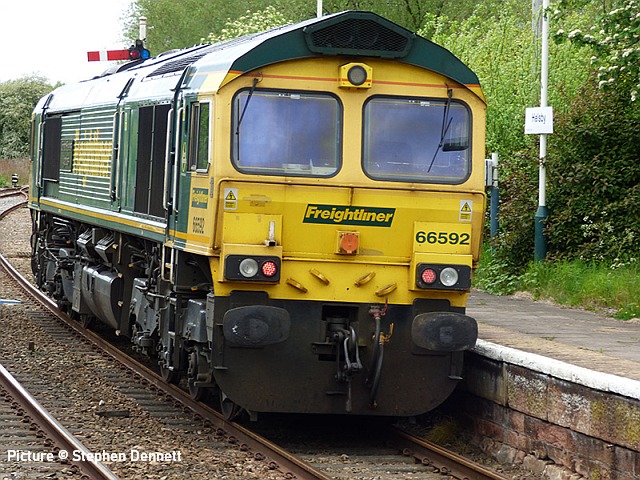
66 592 was shuttling between Helsby and Hooton through the day ...
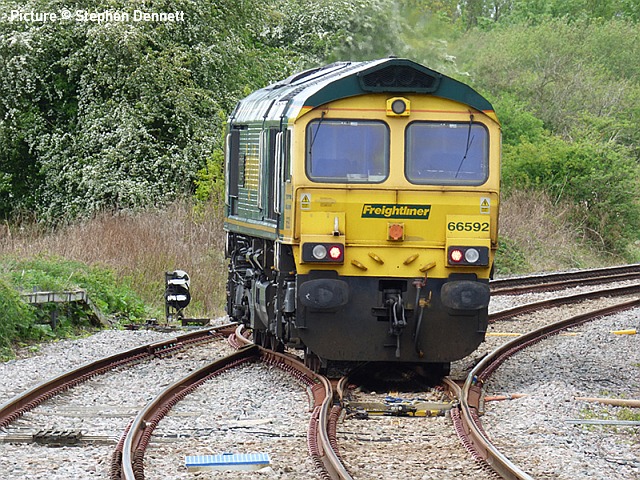
... presumably a route-learning operation.
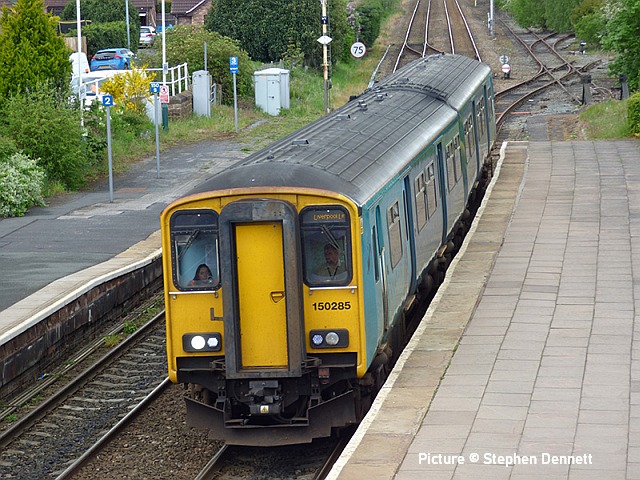
150 285 working the recently-introduced Chester - Liverpool service via the Halton Chord.. a trainee driver in the cab?
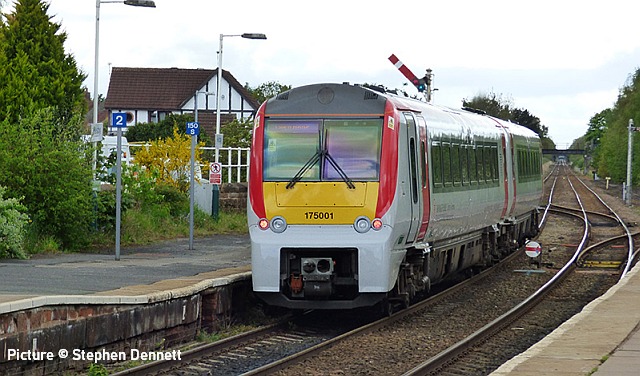
175 001 departs from Helsby working a Manchester Airport - Chester service.
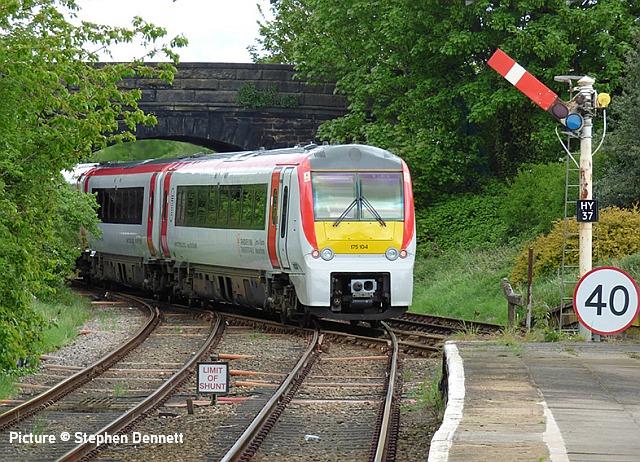
175 104 departs for Manchester Airport.
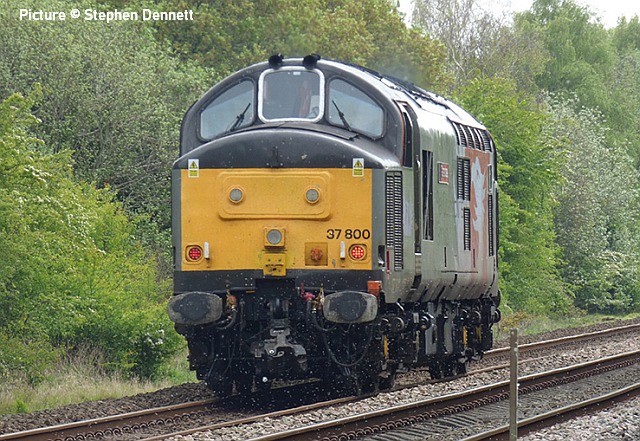
Flint on 14 May, with 37 800 Cassiopeia on a route-learning trip. This loco is owned by Europhoenix, and hired to Rail Operations Group. We believe that ROG drivers will be in change of the forthcoming test runs of the new TfW Class 197 trains.
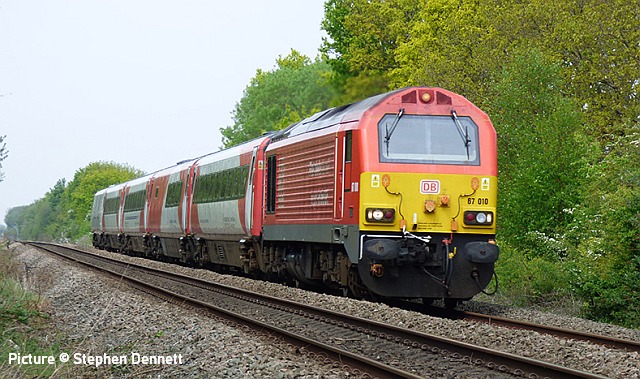
The loco-hauled set with 67 010 doing further trials between Holyhead - Crewe - Holyhead.
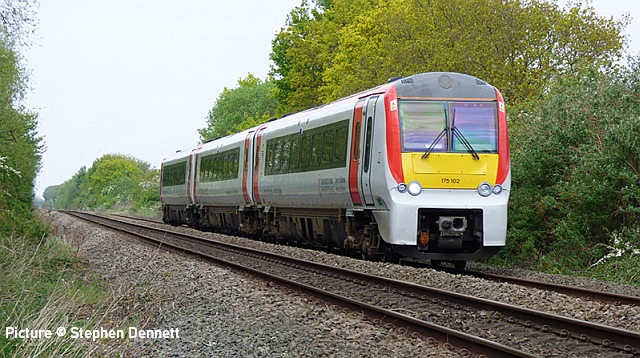
3-car set 175 102 on a Llandndno - Manchester Airport train on 14 May.
Freightliner route-learning trips - observed by Geoff Morris.
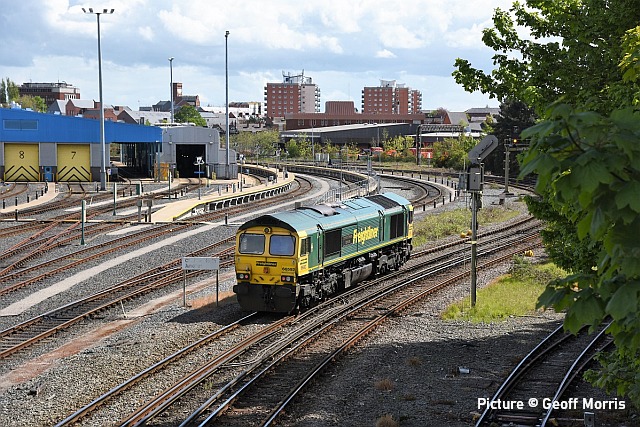
From Wednesday 12 May Freightliner started running what I presume to be route-learning trips over the lines between Chester and Latchford via Hooton and Helsby. The loco used came from Basford Hall and ran via Chester at the start and end of the day. Trips were scheduled all week although they only ran from Wednesday (12 May) to Friday.
On Wednesday the trips seemed to be focused on the lines between Hooton & Latchford via Helsby although one of the round trips was extended from Hooton to Chester. The loco used was 66 592 Johnson Stevens Agencies and I photographed it at Chester North Junction (above) on its way to Chester station . It was scheduled to reverse there and return towards Hooton but in the event it then ran straight back to Basford Hall.
I was otherwise engaged on Thursday (when it focused on the line between Chester & Helsby via Hooton) and omitted any running between Helsby & Latchford.
Friday 14 May’s schedule was a re-run of the Thursday itinerary. In the event it got changed during the day as the first trip continued from Helsby on to Latchford, According to RTT it arrived quite late at Helsby and I assume that re-pathing on the Merseyrail Electrics routes would have been problematic and it was sent to Latchford to await a time before returning to Helsby in time for its next scheduled run.
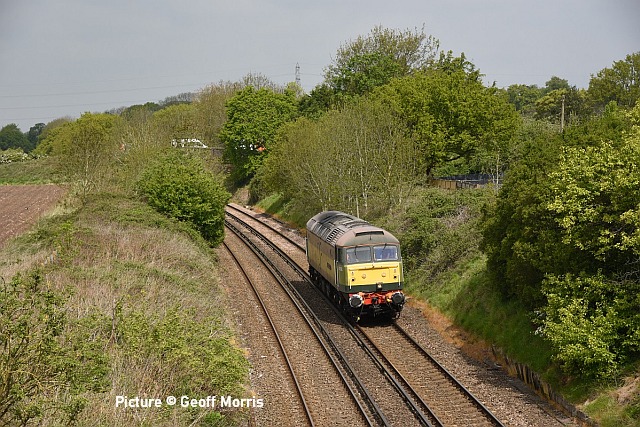
I photographed this from the main road bridge across the line at the site of Upton-By-Chester station and was very surprised when 47 830 Beeching’s Legacy appeared. This is “owned” by Freightliner and based at Basford Hall where I understood it was confined to yard duties.
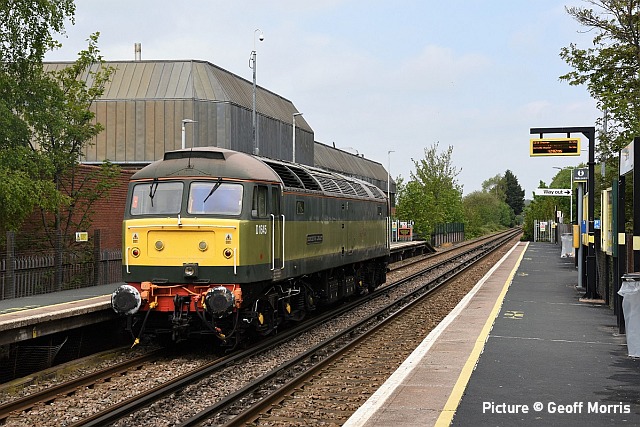
This prompted me to wait at Bache station to photograph it heading north back to Helsby. This turned out to be the last of round trip of the day (even though the schedules on RTT indicated two more round trips) .
Weed-killer?
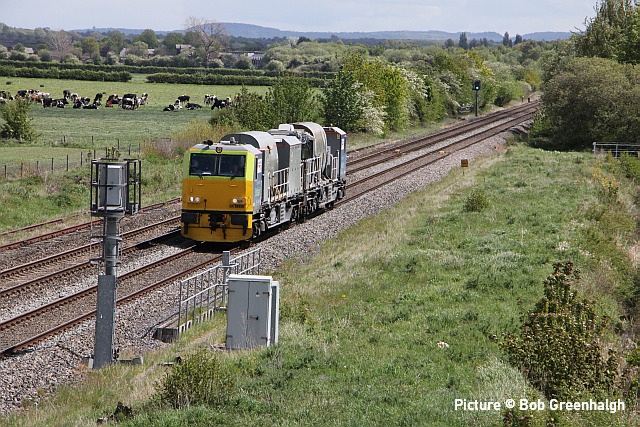
Monday 17 May saw Multi-purpose vehicles DB98956 / 98906 head down the Coast, presumably on a 'vegetation control' mission. Bob Greenhalgh captured them at Beeches Farm.
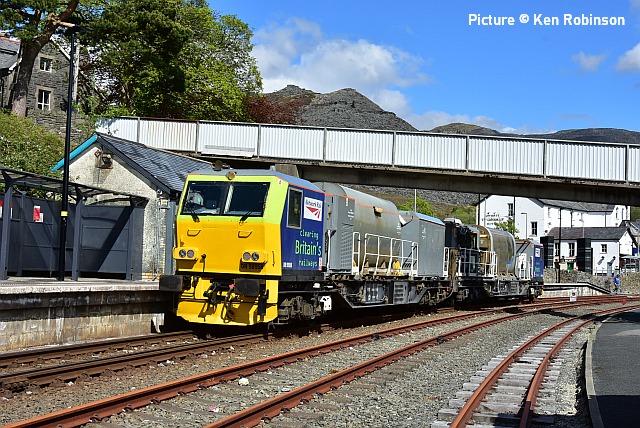
Ken Robinson came across the train at sunny Blaenau Ffestiniog.
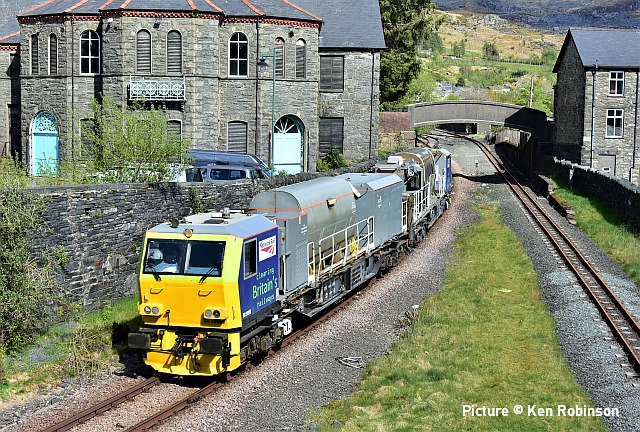
Passing the Ffestiniog Railway line.
Collecting the set of Mk4s - by Rhodri Williams
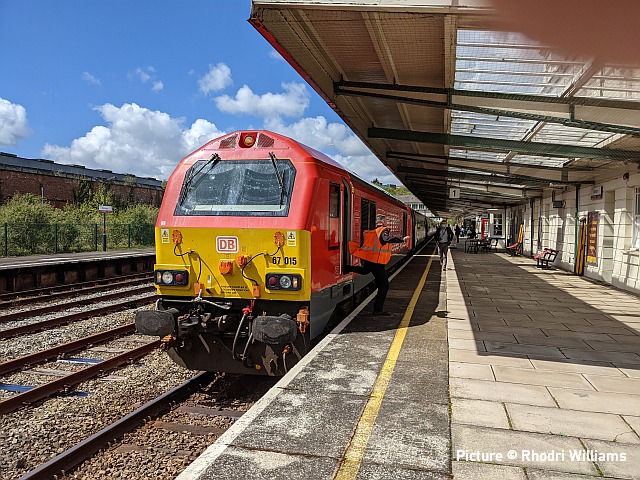
67 015 at Bangor, 6 May - carriage set HD02.
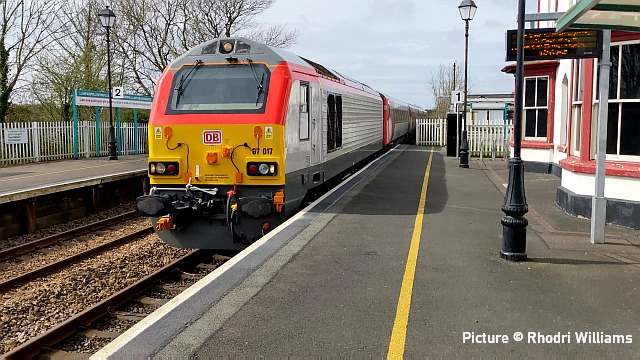
67 017 at Llanfair PG, 8 April. Set HD01.
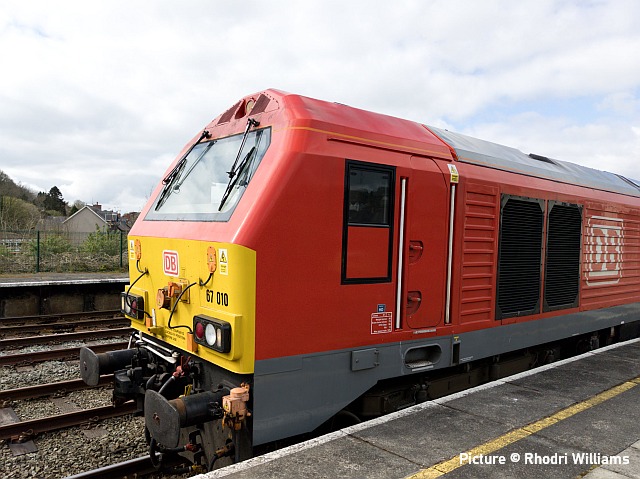
on 13 April ...

... with Set HD03.
From Dave Sallery's archive

20 104 and 20 142 are working the Derby to Llandudno train at Mold Junction, 22 July 1991.
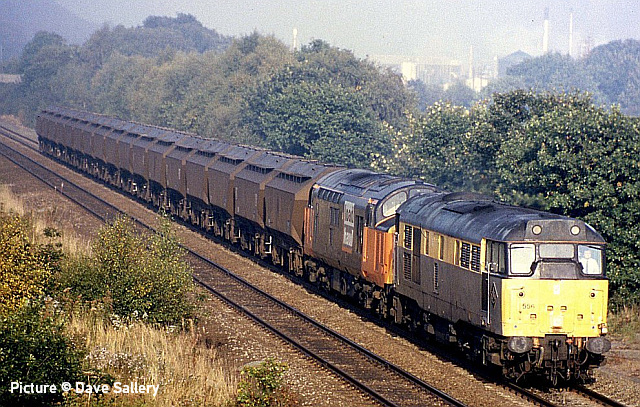
22 July 1991 : A rare pairing on the Holyhead to Immingham empty cokes after 37 713 had failed the previous day.
Looking back: Irish steam - by David Pool
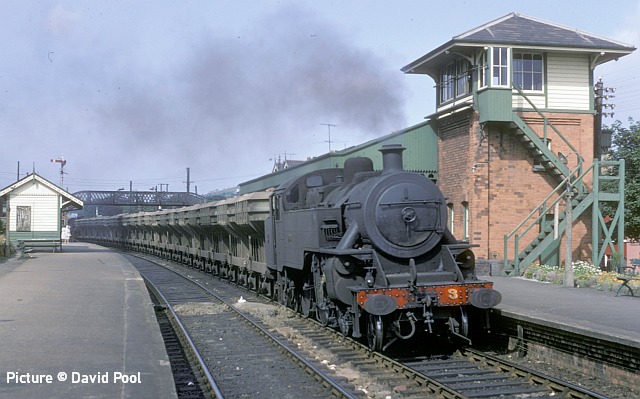
One hundred years ago Ireland experienced a massive change in government when Northern Ireland and the Irish Republic separated. This selection of images illustrates some of the steam locomotives which worked since then, and thankfully are now preserved.
The WT Class 2-6-4T locomotives of the Northern Ireland Railways were built at Derby from 1946, and were the last survivors of working steam in Ireland. No.4 has been preserved at Whitehead by the Railway Preservation Society of Ireland (RPSI), and was featured in my images for the Notice Board on 30 August 2020. A sister locomotive No.5 was photographed on 29 August 1968 passing through Whitehead with a spoil train, No.51 being on the rear. (above).

The only survivor from the Sligo, Leitrim and Northern Counties Railway is No. 27 Lough Erne, which was at Belfast York Road on 30 August 1968. Two locomotives had been built by Beyer Peacock in 1949, and were the last new steam locomotives to appear on an Irish Railway (except for the experimental Turf Burner on the CIE) . They ran on the SLNCR from 1951 to 1957, when the railway closed. They had only been leased until then, and were eventually sold by Beyer Peacock to the Ulster Transport Authority, being used as shunters around Belfast. The Northern Ireland Railways took over from the UTA in 1967, and sold No.26 for scrap, but Lough Erne survived and was withdrawn in 1969, moving to the RPSI’s base at Whitehead. After some use there, it now awaits further restoration. (1630).
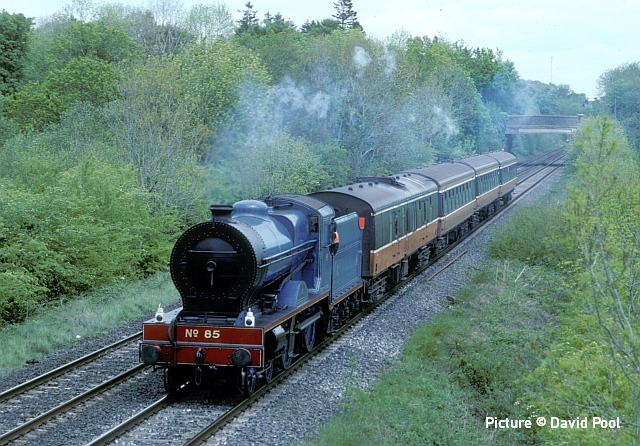
Probably the best recognised Irish locomotives are the V Class 3 cylinder Compounds of the Great Northern Railway (Ireland), in their distinctive blue livery. Built by Beyer Peacock in 1932, No.85 Merlin worked mostly the Belfast to Dublin “Enterprise” trains. Towards the end of steam in 1958, Merlin was transferred to the Coras Iompair Eireann (CIE), who by then had withdrawn most of their steam fleet. The takeover by diesels led to Merlin being withdrawn in 1963 and bought for the Belfast Transport Museum at Witham Street, where it was displayed in 1969. It was then loaned to the RPSI at Whitehead, and after major restoration by Harland and Wolff in Belfast it appeared on steam railtours in 1986. My photograph was taken near Dundrum on 20 May 1995, when it was participating in the “William Dargan” railtour of the RPSI.
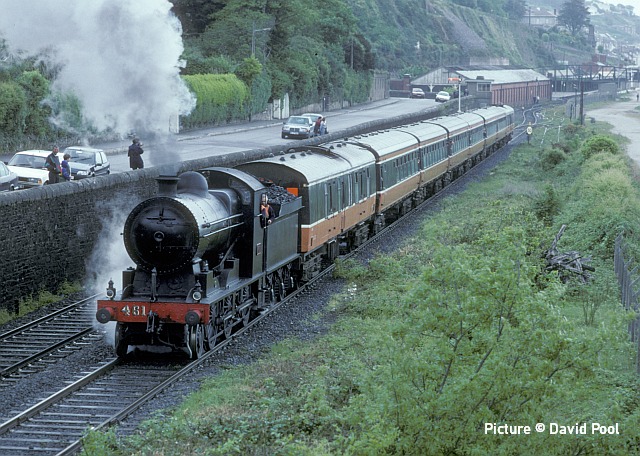
Some of the most successful Irish locomotives were the two Dublin and South Eastern Railway’s Class K2 Moguls. They were also built by Beyer Peacock, but when Nos. 15 and 16 were delivered in 1922 it was decided in view of the civil unrest at the time they should be stored safely in Belfast’s Adelaide shed. Subsequently the Great Southern Railway was formed in 1925, amalgamating the DSER and other railways, and the K2s were renumbered 461 and 462. As the last surviving DSER locomotive, No.461 was withdrawn by the CIE in 1965 and nominated for preservation, eventually arriving at Whitehead, where restoration was completed in 1990. Since then No.461 has been seen on railtours throughout Ireland. On 21 May 1995 it was departing from Cobh on another leg of the “William Dargan” railtour.
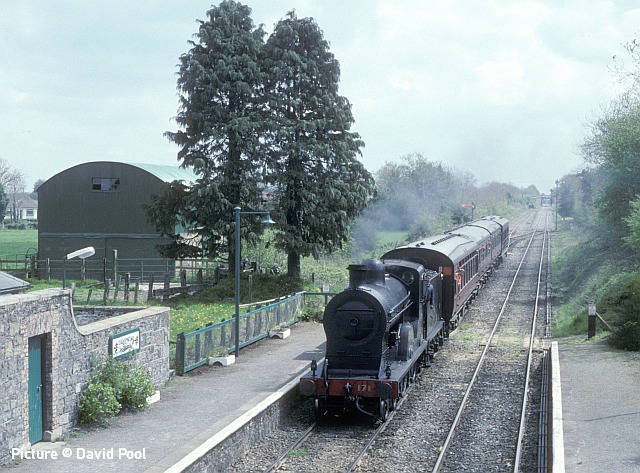
Also selected for preservation was No.171 Slieve Gullion of the Great Northern Railway (Ireland). Another Beyer Peacock product, this S Class was built in 1913 and were the GNR(I)’s most powerful express passenger locomotives until the arrival of the V Class Compounds. No 171 was rebuilt in 1937, and allocated to the CIE in 1958, but bought back by the UTA in 1963 and eventually leased by the NIR to the RPSI at Whitehead. Since then No. 171 has appeared on many railtours, and after the boiler certificate expired in 2002 the locomotive was bought by the RPSI, where it currently awaits funding for a major overhaul. On 11 May 1996 it was entering Mostrim with the “Knocknarea” railtour of the RPSI.
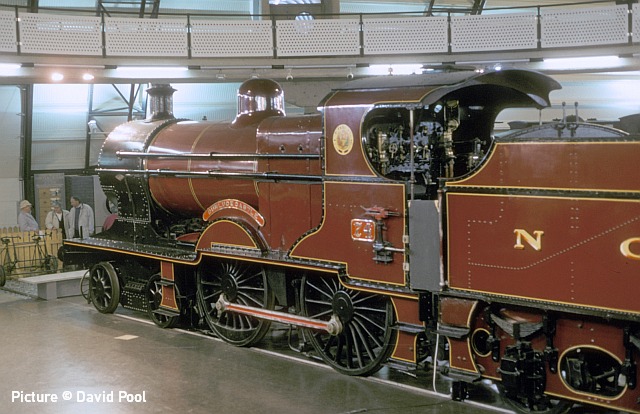
The similarity between the LMS Class 2P and the U2 Class of the Northern Counties Committee is apparent at first glance but there are many differences in detail. This NCC locomotive No 74 Dunluce Castle was built by the North British Locomotive Company in 1921, and used on services from Belfast such as the expresses to Portrush and boat trains to Larne. After withdrawal, it was cosmetically restored by the UTA in 1962 and displayed at Witham Steet in 1963. It is now at the Ulster Folk Museum at Cultra, where it was photographed on 19 May 1996.
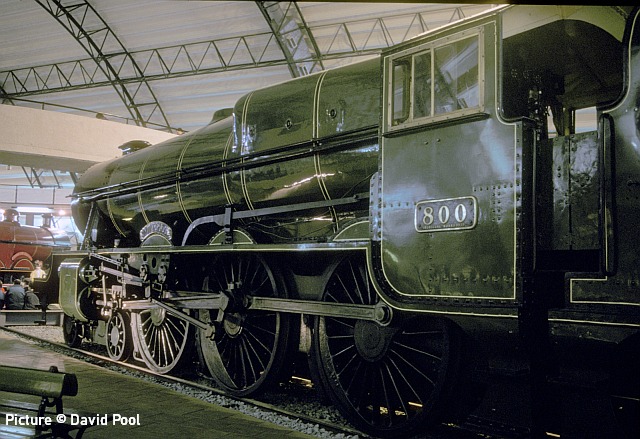
I have always regretted never having seen the Great Southern Railway 800 Class locomotives in steam, the last one being withdrawn in 1964. Fortunately the first (No.800 Maeve) has been preserved and is now at Cultra. It was built in 1939 at Inchicore Works of the GSR and intended for use on the Dublin to Cork expresses. The appearance is not unlike the rebuilt Royal Scot locomotives (which appeared later in 1943) and they were clearly the largest and most powerful locomotives in Ireland. The onset of War led to coal shortages, and with an axle load which confined them to the Cork line they were never able to display their full potential.
For a few years between 1950 and 1953 the “Enterprise” express from Belfast was extended to Cork, and the 800 Class locomotives were used from Dublin, but eventually the diesels took over and No.800 was no longer needed. The nameplate is in Irish script, and appears like Maedb, so Maeve is an anglicised version. It was almost impossible to get a reasonable photograph when it was at Witham Street Museum, where the exhibits were closely packed, but at Cultra it was a little easier, although not possible to include the tender!
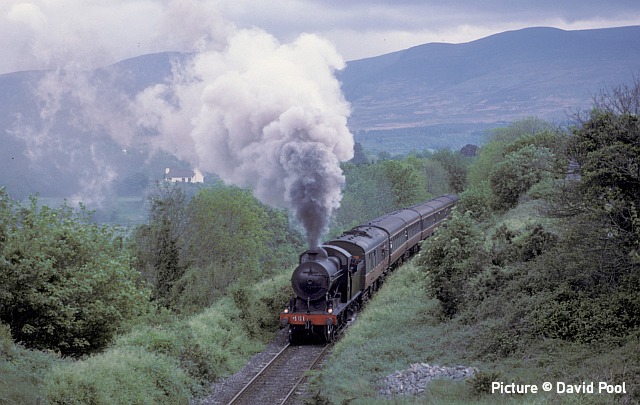
Although much of Ireland is without hills or mountains, the Killarney district is a notable exception. I was following the “Slieve Mish” railtour on 10 May 1997, and the Mogul No.461 was taking the Mallow to Tralee leg. The train has just left Killarney and is climbing past Upper Coolcorcoran. Some sunshine would have been nice, but you make the most of the weather in the hills of Kerry!
Llangollen Railway Trust Ltd - Press Release 14 May 2021
The auction of Llangollen Railway PLC’s assets was duly completed on Wednesday 12 May. The bidding was fast and furious on the day for the coaching assets in particular, and the larger plant items. The prices paid were substantially in excess of our expectations which is good news for the PLC’s administrators and we are glad all the creditors, including those who are unsecured, will benefit accordingly.
We were delighted to secure our priority one assets, namely one accessible-adapted coach, road railer, 12t crane and Lowmac. This would not have been possible without the support and dedication of our members and numerous other donors, and we thank them all. We were similarly delighted to learn that friendly bidders have acquired 2 further coaches and a significant amount of machine tools which will remain on the Railway.
Pete Edwards, chairman, said: “It was very important to secure the principal assets which will enable us to continue preparations for reopening without further interruption. The support we have received from so many donors, without which we may well not be able to look forward to running again this year, and the friendly bidders, has been crucial and is very much appreciated. Numerous coach and plant items will be leaving the Railway which is a great shame from our point of view but at least their future in preservation is secured
"Preparations can now begin in earnest to complete the necessary works on Dee Bridge and in the tunnel. We also need to press ahead with the necessary safety and regulatory matters. “We are on target to reopen in late July or early August,” Pete Edwards concluded.
Both appeals remain open and we would welcome further support to help fund the higher prices we had to pay for the priority items and to provide the necessary working capital to get us up and running again. Please donate if you can:
Online at https://llangollenrailway.enthuse.com and click the Donate button, or via our Facebook page. For taxpayers, the Railway can apply for 25% Gift Aid. Alternatively, supporters are invited to send cheques payable to Llangollen Railway Trust Ltd to The Station, Abbey Road, Llangollen LL20 8SN.
The Auctioneer writes:
In a statement on how the sale went James Hanson, a spokesman for auctioneers Lambert Smith Hampton, said: "The auction received an incredible amount of interest and the bidding was highly competitive resulting in the prices achieved exceeding expectations. We had over 200 bidders register for the auction and we received in excess of 1300 bids on the 50 lots.
"We had initially requested that interested parties submit offers for the assets of Llangollen Railway PLC for negotiation by private treaty. Due to the level of interest this attracted, we decided that the fairest and most effective method of disposing of the assets would be by public auction. The prices achieved were significantly higher than the offers received prior to the auction thus validating the decision to use this method of sale.
"More importantly, I understand that the Llangollen Railway Trust were successful in purchasing the assets that they require to operate and maintain the railway which is of great value to the local economy. Furthermore, I am aware of at least 2 coaches which were purchased by a private individual who intends to leave the coaches at Llangollen Railway.
The majority of the engineering machinery will also stay on site. The 7 other coaches included in the auction were purchased by other heritage railway organisations which means that they will continue to be utilised for the purpose they were built for."
50-ton crane at risk
The Llangollen Railway's 50-ton Cowans Sheldon crane has been purchased by a scrap merchant, who we understand wishes to break it up on site. This is an historic vehicle and we understand the only one of its kind left operational, having being built for the MOD as a steam crane, acquired by BR and converted to diesel operation as a breakdown crane. The price paid was about £35,000.
If anyone wants to help try and make a last ditch attempt to save this historic vehicle, ideally to remain on the railway, please contact the LR Trust as soon as possible (trustllanrail@gmail.com).
North Wales Coast home page | Archive | Previous Notice Board